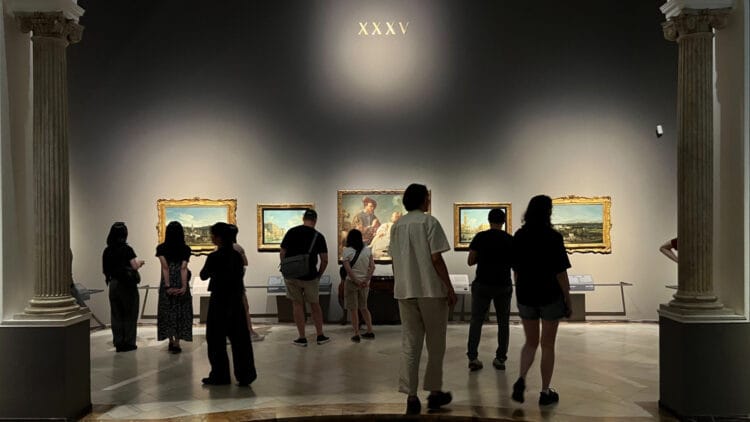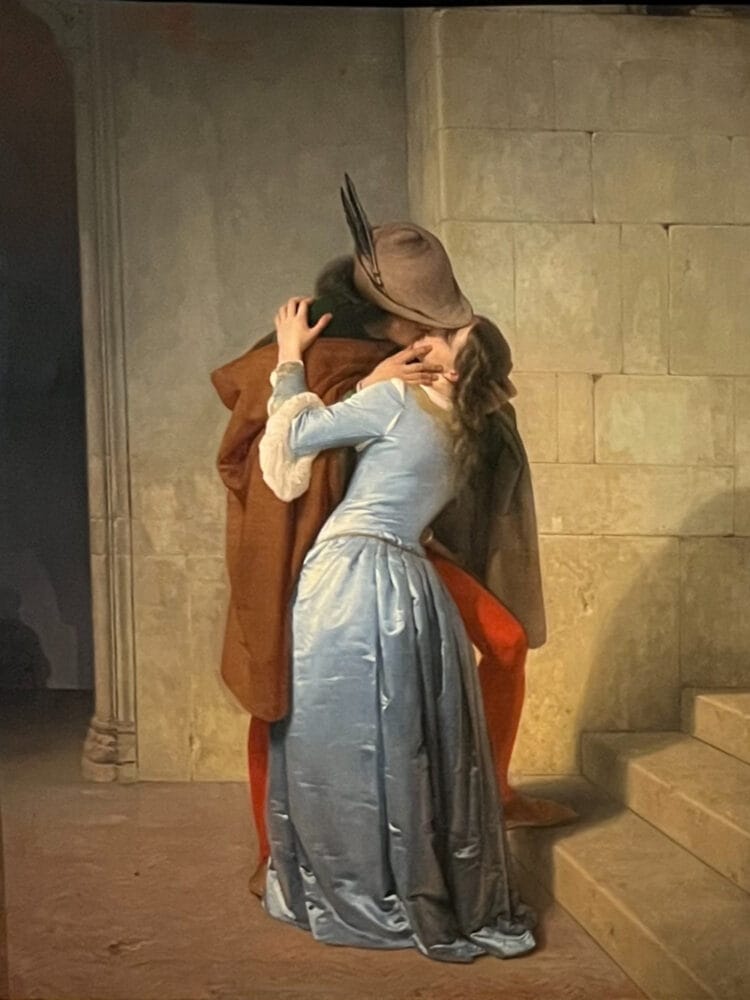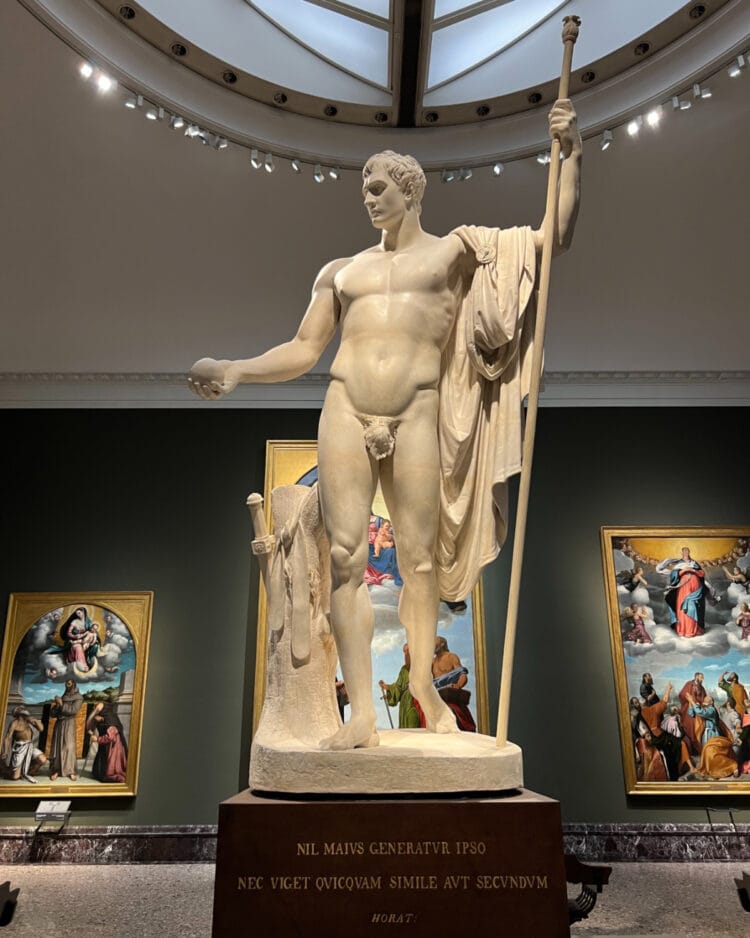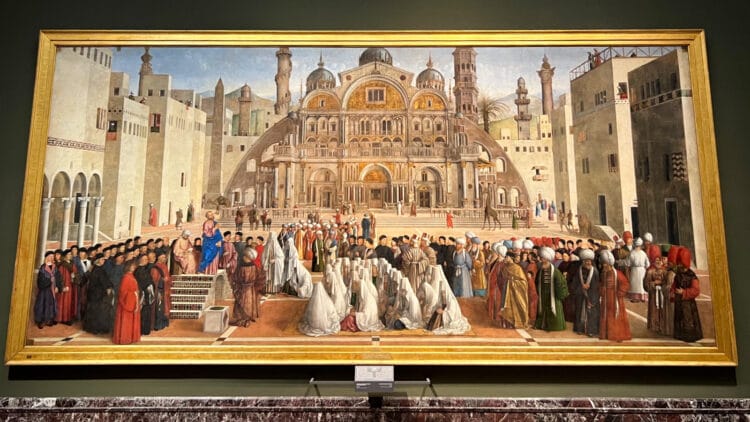The Pinacoteca di Brera is Milan’s largest art collection, but the gallery is not overly big, and tickets are easy to buy.

Planning an art stop in Milan that won’t swallow your day? The Pinacoteca di Brera is the city’s most rewarding painting collection—and a calm counterpoint to bigger, busier museums elsewhere in Italy. Book time-slot tickets online, breeze past the line, and enjoy masterpieces from the late Middle Ages to the 19th century without the crush.
- Why go: World-class Italian art (Mantegna, Raphael, Piero della Francesca, Titian, Caravaggio, Hayez) presented in fewer than 40 rooms—easy to digest in 60–90 minutes.
- Tickets: Time-slot reservation is required; slots are usually available a few days in advance. You can buy tickets or book guided tours directly.
- Good to know: Milan’s two Leonardo da Vinci paintings are not here—The Last Supper is in Santa Maria delle Grazie, and the Ambrosiana holds The Musician and drawings from the Codex Atlanticus.
How to Visit (and Not Waste Time)

- Orientation: The Brera Art Museum is on the upper floor of Palazzo Brera. From the courtyard, take the stairs behind Napoleon.
- Layout: Galleries run roughly chronologically, circling the courtyard clockwise. You’ll finish near the café at the exit.
- Crowd strategy: Evenings, early mornings, and lunchtime tend to be quieter. It’s seldom “Uffizi-level” busy.
- Modern add-on: 20th-century works are at nearby Palazzo Citterio (shorter hours and separate access).
Brera Tickets & Practical Info

- Time-slot policy: Everyone needs a reserved entry time. Same-day slots are often available outside peak weekends.
- When to book: A few days ahead is usually enough; Brera tickets rarely sell out weeks in advance (unlike The Last Supper).
- Typical prices: Standard (c. €15), reduced, and occasional free entries are offered (first Sundays, but try The Last Supper first). Check the official site for the current policies and cheapest prices.
- Opening hours: Tuesday–Sunday 8:30–19:00 (last entry 18:00); closed Mondays and December 25.
- Location: Via Brera 28, a short walk north of the Duomo, La Scala, and Galleria Vittorio Emanuele II. Nearest metro stops: Lanza and Montenapoleone.
Brera Highlights You Can See in About 90 Minutes

This is a distilled route to the “don’t-miss” pieces. It mixes marquee names with Lombard gems so you leave with a sense of Milan’s own voice in Italian art.
Early & Gothic
- Madonna and Child, Pietro Lorenzetti (1320–1323) — solemn tenderness on the cusp of Renaissance naturalism.
- Madonna of Humility, Giovanni di Paolo (c. 1430) — a poetic Sienese take on intimacy and gold-ground glow.
- Fresco fragments by Donato Bramante (late 15th c.) — a rare peek at the architect’s painterly side.
Mantegna’s Shock of the Real
- Lamentation over the Dead Christ, Andrea Mantegna (c. 1483) — one of the museum’s most famous images: daring foreshortening, visible wounds, and heartbreaking restraint.
Venetian Light & Theater

- Penitent St. Jerome and Portrait of Count Antonio Porcia, Titian — spiritual introspection set against the painter’s dignified portrait style.
- Paolo Veronese — feast-day opulence in works such as Dinner at Simon’s House and The Last Supper, where sacred narrative meets stage-set architecture.
- The Discovery of the Body of Saint Mark, Tintoretto — restless diagonals and charged light; for more on the St. Mark cycle, compare Venice’s Gallerie dell’Accademia and Tintoretto’s tour-de-force at the Scuola Grande di San Rocco.
The Golden Room (Room 24/26): Harmony & Order
Three three-star paintings in a single room:
- The Marriage of the Virgin, Raphael (1504) — perfect geometry and calm radiance; the textbook definition of Renaissance balance.
- Christ Tied to the Column, Donato Bramante (1490–1499) — the only securely attributed panel by the great architect; sculptural form meets spiritual focus.
- Madonna and Child with Saints and Federico da Montefeltro, Piero della Francesca (1472–1474) — crystalline order and serene light in an altarpiece of monumental stillness.
Baroque Drama
- Supper at Emmaus, Caravaggio (1606) — revelation by candlelight. Expect theatrical chiaroscuro and a darker palette than his earlier London version.
Romantic Milan

- The Kiss, Francesco Hayez (1859) — national yearning and cinematic romance in a single embrace; a signature painting for the city.
- A Great Sacrifice, Girolamo Induno (1860) — intimate patriotism, echoing Hayez’s mood in quieter tones.
Canova’s Napoleon: Free Outside, Study Inside

Even if you’re short on time, step into the courtyard: the bronze heroic nude Napoleon as Mars the Peacemaker (1811) greets visitors like a Roman deity—idealized, commanding, and perfectly scaled to the architecture. Inside the museum, the full-size plaster model (1809) softens the heroics and shows Canova’s hand in the making.
Curious about the original marble? After Napoleon’s fall, it went to London, where it’s displayed at Apsley House.
Key Takeaways for Travelers

- Shortest path to big art: Brera offers a concentrated hit of Italian painting without museum fatigue. The Middle Ages to the 19th century are covered by world-class works in fewer than 40 small rooms.
- Brera Tickets made simple: Reserve an essential time slot; last-minute options are common outside peak weekends. For convenience, consider online skip-the-line tickets or a guided visit.
- Pairings: Combine the Brera with The Last Supper, the Ambrosiana, or the 20th-century art in the Novecento next to the Duomo for a varied Milan art day. Milan’s churches are also full of religious art (see the “Sistine Chapel of Milan”) and, of course, in the Duomo Museum.